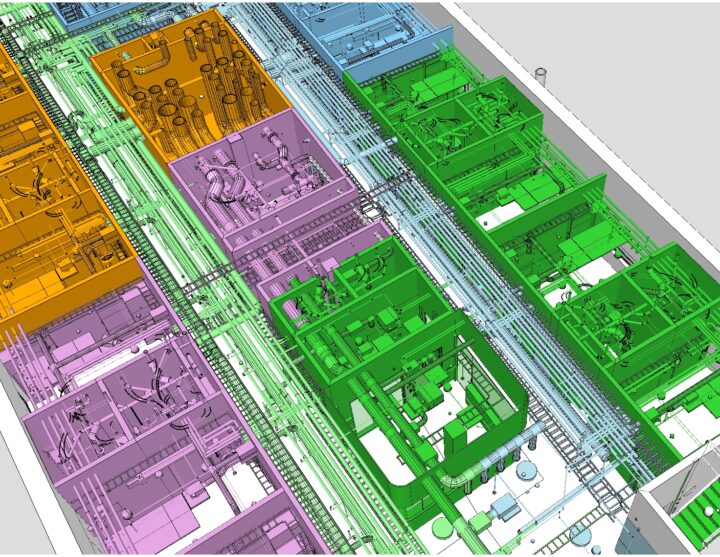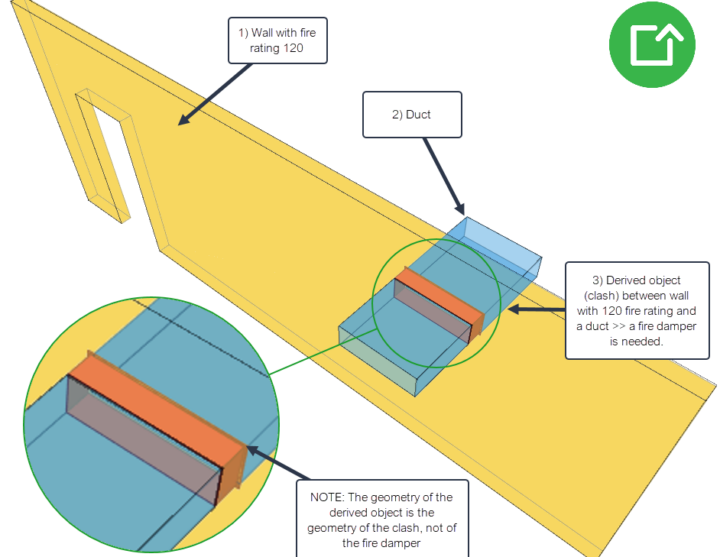How to manage BIM chaos
04.10.2022
Implementing BIM is often chaos. Or in more poetic terms, it is full of little butterflies, flapping their wings causing unmanageable data tornados.
There’s chaos when creating the BIM data. Chaos when managing the designers. Chaos when managing data at the receiver’s end.
Chaos when different functions try to use the data. Chaos in automated analysis and simulations. And there’s even chaos when trying to deploy and teach organizations how to use that data too!
But implementing BIM need not be chaotic.
Let’s take a deeper look into where the chaos is created and how we can manage it at different levels and steps. So, instead of creating random destructive tornados mixing our data into a useless mess, we can create positive tornados with game-changing effects on how your organization uses data to drive better decisions.
Chaos in design
Individual modelers might have the modelling process well in hand. Even individual companies. However, in the larger picture each and every small modelling decision made by the person or the company, or even the model author tool they use, can be likened to that famous flapping of wings of a butterfly.
On a larger scale, all these small alternating decisions will create variations in the data and thus chaos for BIM data management. No wonder, the BIM data standardization or consistency issue is so hard to solve.
Chaos when managing the designers, and how to do it in a new way
It’s not like there haven’t been efforts to solve this. So far, the industry has tried to manage this issue by introducing more and more requirements for designers. More and more detailed guidelines.
The issue is that every new requirement or guideline adds another butterfly to the system.
Think about it. How good are we humans at following the rules? Not very. I don’t mean that we are bad, or have ill intentions. It’s just hard. Every person makes his or her interpretation of the requirements their own way and thus adding to the chaos.
It should be obvious, that the solution is to minimize the requirements. However, this has not been made, because there hasn’t been an alternative solution to manage the actual issue. Now there is.
Turns out you can solve the data inconsistency issues with technology. Let the designer do their job and do more to the data on the receiving end. All you need is a small piece of software in the right place, doing the right stuff.
Instead of managing the data in a distributed and manual way on each designer’s desktop, you can do it in an automated and centralized way with the right tech. This again enables you to minimize the requirements and remove a whole lot of unmanageable changes, and extra management from the system. BIM manager, sounds good, right?
Chaos when managing the data, and how to change that in a revolutionary way
However, minimizing the requirements is only part of the solution. BIM data is created in multiple different sources, which all create different kinds of data.
Not just because of the chaos introduced by the design and modelling decisions. Also, because the different sources are simply different by nature: different design disciplines, different model author tools, different companies and projects, and so on…
In order to use all this data together in an efficient and reliable way, it needs to be unified and made consistent.
We need automated data wrangling. This is a basic data management procedure used in every data-using industry. Somehow the construction industry has so far missed this opportunity.
Not anymore. This is huge.
Minimizing the requirements and making the data from different sources consistent in an automated and centralized way will unlock the biggest issue on the way to becoming a BIM data-driven industry.
Chaos in using the data, and how to get to the next level
Now, the design data is only the starting point of all the functions that will follow down the stream. If every data user in downstream tries to handle the data separately, on a case-by-case basis, then we end up with another flock of butterflies.
Every separate decision made here will cause chaos to the whole again. And it is a vastly inefficient way to work. If even possible, because most of the professionals in the downstream are not, and should not be, BIM or data-savvy people.
The solution here also is to use automated and centralized data wrangling and management. Make the data ready for use in a centralized and automated way.
As soon as the data is consistent (done in an automated and centralized way), it can be automatically enriched to serve hundreds of use cases.
You can enrich the data with rule-based classifications, locations, and even derived calculations, derived new objects, and data, which would not otherwise be available. And the enriched data is always the same!
Furthermore, as soon as you have consistent and enriched data in your hands, you can start connecting it to other data sources in an automated and scalable way. This is where the real fun begins.
Chaos in BIM data analysis
Without consistency and fit-for-purpose data, automated analysis and simulations are basically impossible. You need to adjust the rules every time. You need special skills to do this.
This again introduces another set of small decisions and changes that leads to additional chaos. If the value of the analysis is less than the cost, or the data cannot be delivered on time, it is useless.
With consistent data, you can also start creating rule-based analyses and simulations, which work in every project and for every update. This is where you start to find correlations and insights in the data in a bigger picture.
And ultimately, after a while, you will find that you have collected a massive set of consistent data from all of your projects. This can be further analyzed with modern algorithms, even machine learning, and AI as a whole. Come on. You need consistent data. It is a huge opportunity!
Chaos in deploying and training BIM in an organization
Finally, deploying and teaching an organization to use BIM data can be very difficult. Yet another source of chaos. Especially if the data in every project is a little bit different, and not ready for use. People don’t have time to fiddle around, they forget, they don’t find value, and revert to old ways.
However, if you first make the data consistent, consistently enriched, and connected, you can start creating ready-made views for the users for specific use cases. The views will always be the same. In every project, every update.
No matter if the user is a site surveyor, quantity surveyor, production planner or energy analyst. If you use the data for scheduling, procurement, logistics, on-site management, or even at the managing level. People learn by repetition. Consistent data and ready-made views go a long way.
In the eye of a friendly BIM data hurricane
All this is already possible and already done by our customers with the help of Simplebim. Getting there might seem like a daunting job. However, you don’t have to manage it all at once, and you don’t have to do it alone.
You can start with simple things and take it from there – step by step with our and our technology’s help. Before you even notice, you will find yourself in the eye of a well-managed data tornado, which drives data-driven decision-making and produces value at every level of your organization.
***
Want to take your BIM data to the next level? Book a free Simplebim demo today and let’s talk more!


